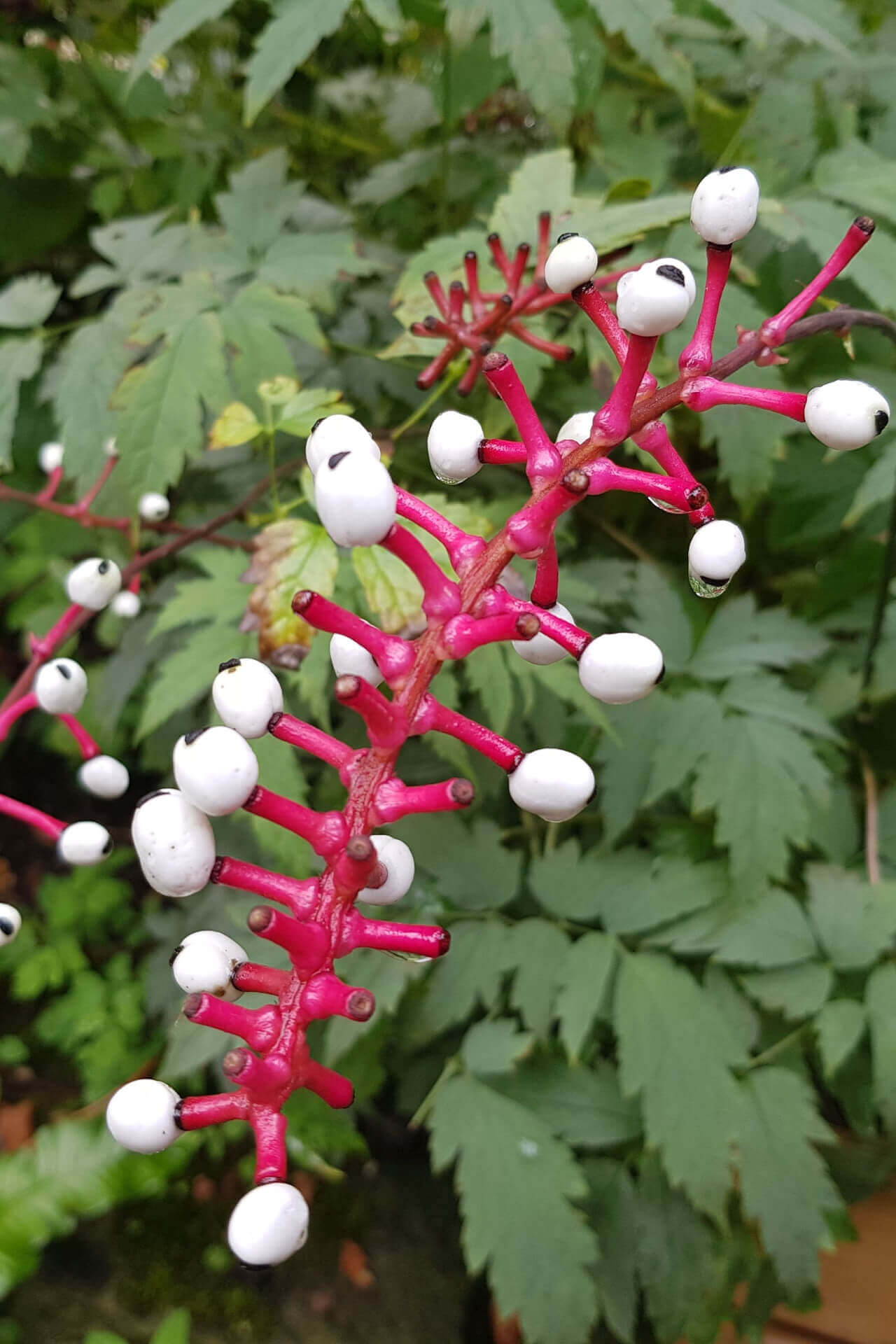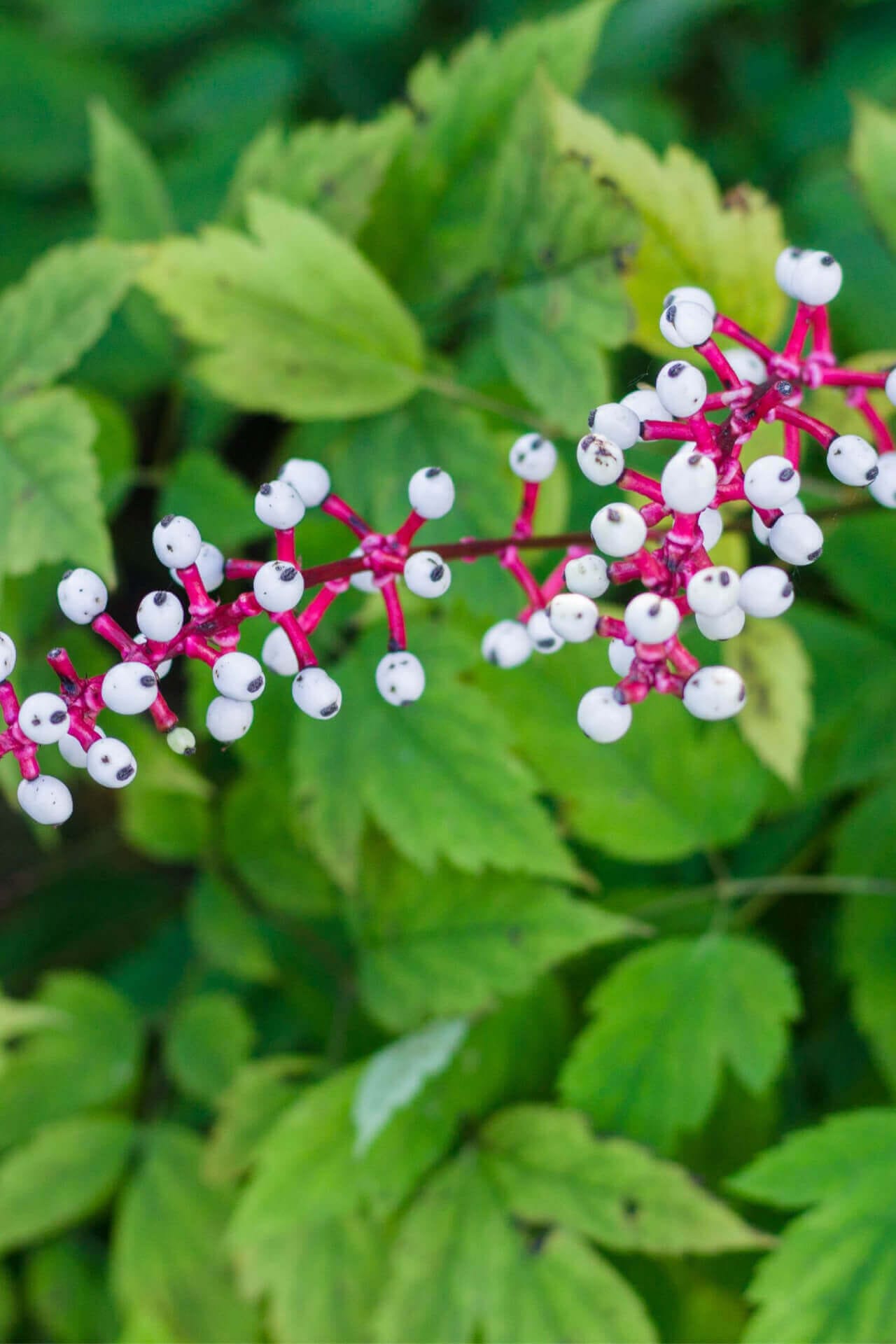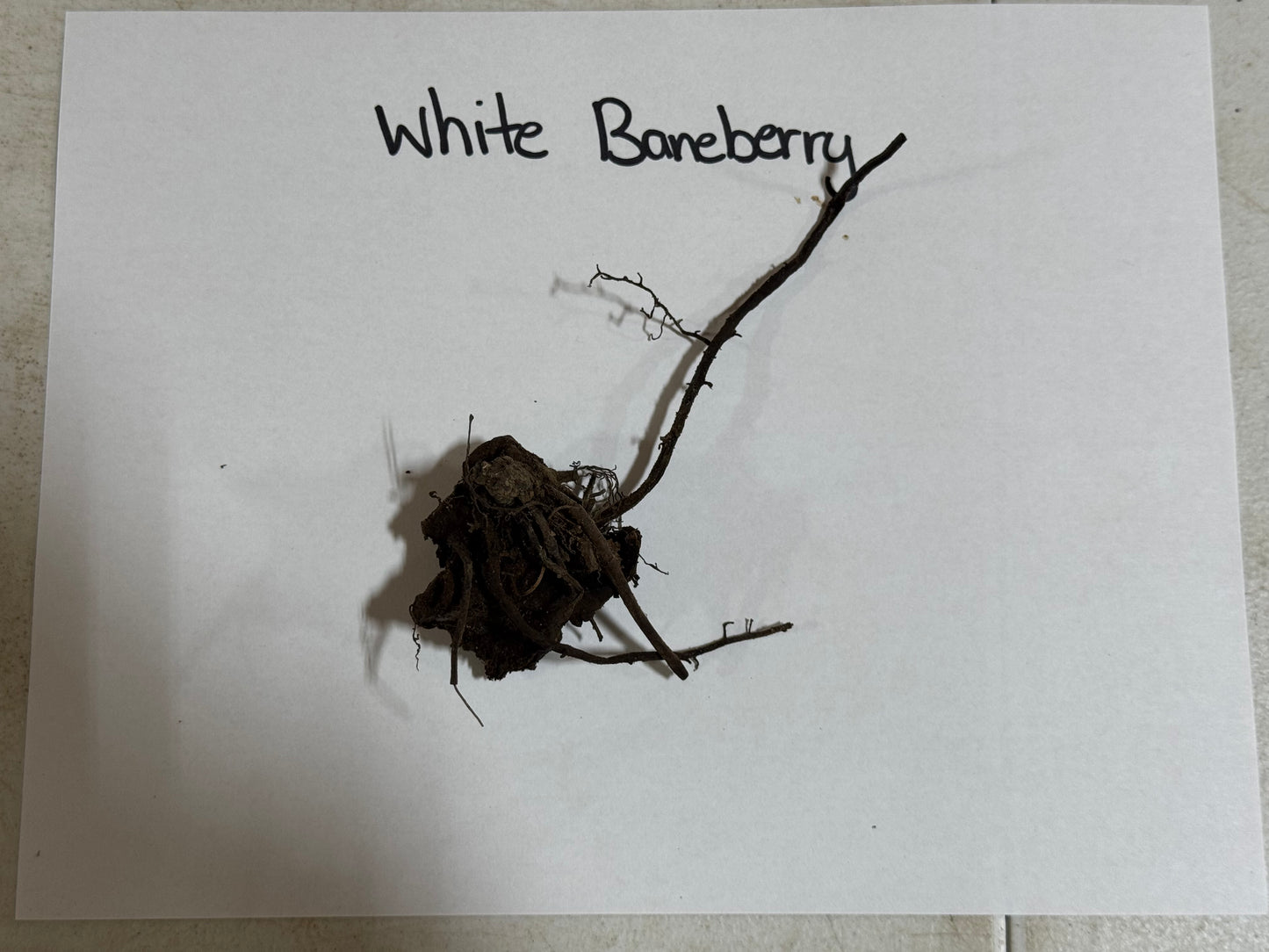Baneberry Doll Eye
Couldn't load pickup availability
Ships 10-12 Days
Over 12"
Sun or Shade
3-8
Border Plants
Bare-root
Actaea Pachypoda - Baneberry Doll Eye
Baneberry Doll Eye is a perennial herbaceous plant in the Ranunculaceae family. It has two main species: the red (Actaea rubra) and the white (Actaea pachypoda). Both species are native to North America and can be found in woodlands and forests.
Plant Appearance
It can reach 2 feet and spread 1 to 2 feet. The leaves are large and compound, with toothed leaflets arranged in a palate pattern. The reached flowers are small and white, set in a cluster at the top of the stem.
The plant's fruit is a berry, typically bright red or white. It, also known as Actaea, is a plant that produces beautiful white or pink flowers in the spring and summer, followed by bright red or white berries in the fall. Here are some tips for landscaping with this plant.
Where To Plant Baneberry Doll Eye
It prefers moist, shady areas with rich, well-drained soil. It can also tolerate full sun if the soil is consistently wet. Rifts rather than as single specimens. When combined with other shade-loving plants, this creates a more natural, cohesive look.
Being Paired With Other Plants
It pairs well with other shade plants, like ferns, hostas, and astilbes. Its white or pink flowers can be paired with plants with contrasting foliage, such as dark green or burgundy-colored leaves. They are toxic if ingested, so it's best to avoid planting them where children or pets might be tempted to eat them and prune them as needed.
They are a relatively large flowering plant that is native to North America, including the Midwestern and Eastern regions of the United States, as well as Eastern Canada. As the name implies, this flowering plant grows from 1½ to 2 feet tall and 3 feet wide, and its white and blackberries closely resemble the appearance of dolls' eyes. Various alternate names, including necklace weed and white cohosh, also know this plant. Its berries, which ripen in summer, contain cardiogenic toxins that are harmless to birds, but both plant and berries are poisonous to humans if consumed.
This plant is of the genus Actaea and the family Ranunculaceae. It prefers clay-like soil and is typically found in deciduous, wooded areas. They are herbaceous perennials with compound, toothed, bipinnate leaves.
Its stems are thick and reddish, with white flowers atop them. The flowers bloom into a dense springtime raceme and grow about 10 cm long. This unique species is easy to grow and is typically cultivated in wildflowers and more traditional gardens as an ornamental flowering plant.
To enable this plant yourself, be sure to plant it in rich, loamy soil, providing water regularly with adequate drainage consistent with its natural environment.
Requirements
This plant requires full shade and is best cultivated in U.S.D.A. plant hardiness zones 3 through 8. If you wish to grow them from seeds, you should wait until late autumn if planting outdoors or in late winter if planting indoors.
Once established, it requires minimal care. The plants produce clusters of flowers that form bright red or white berries at the end of the season. This plant takes several years to reach full maturity and grows best in shaded areas with moist or wet soil. The berries attract birds and insects alike. This perennial will thrive in most gardens.
This Is How Your Plants Will Look upon Delivery
Shipping date depends on the date displayed and chosen when you order from the product's page.
We do not offer warranties on products after 5 days past receiving your plants.




I never had a hard time taking care of this plant. It grows well in my yard without experiencing any signs of dryness and too much moisture.
Thank you so much for your feedback, Sally! It makes our day hearing about how much our customers love our plants and the great service they have received from our team. We have passed on your review to our team and look forward to you purchasing from us again.
This has shown so much achievement in my garden pond. I so love as it change along with the season.
Thanks for the 4-star review, Orby. You made our day! We look forward to making your day again real soon.
This perennial was a very cheap and efficient way to grow a lot of plants in one area.
Thank you for the awesome review, Emily! Your kind words are really appreciated. We are looking forward to making your day once more when you shop with us again.
I will most definitely be buying more.
We spotted your 5-star review. Wow! Thank you so much for trusting us, and we can’t wait to help you again in the future.
I love having this around my house. Helps with sickness
Hearing how much you love our plant has brightened up our day! Thank you for the great review you left us, Bryce, and for choosing to shop with us!

